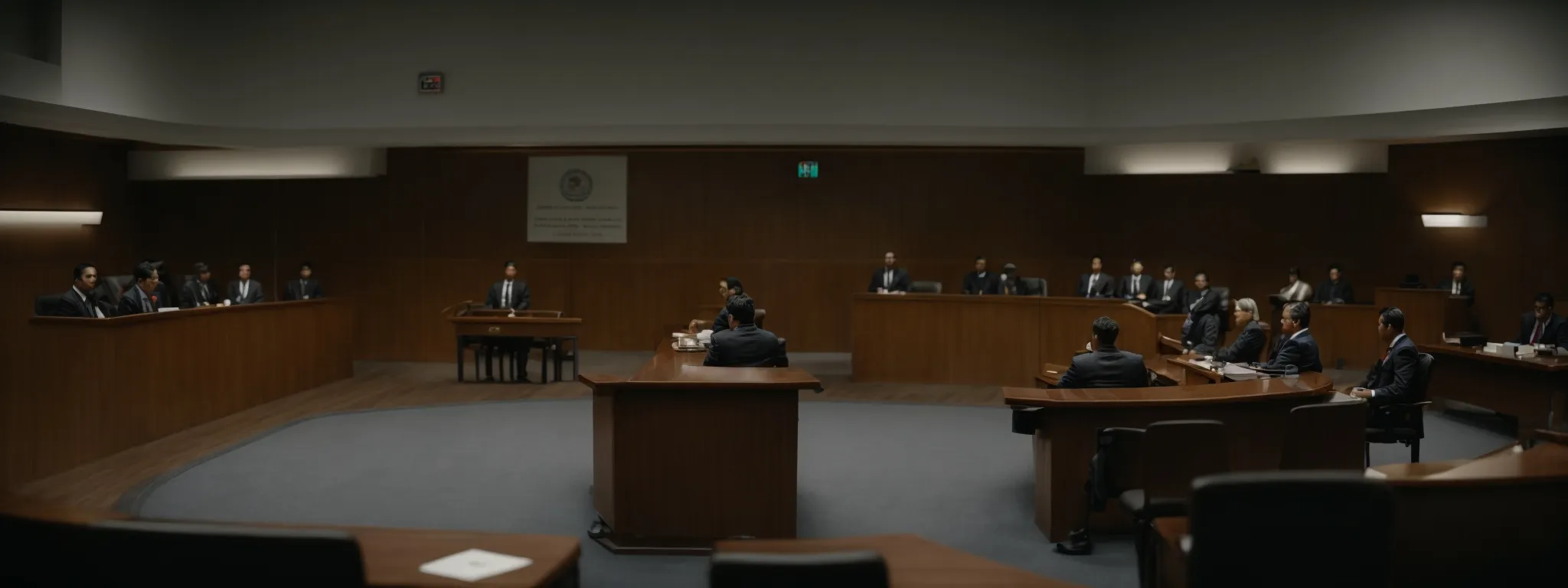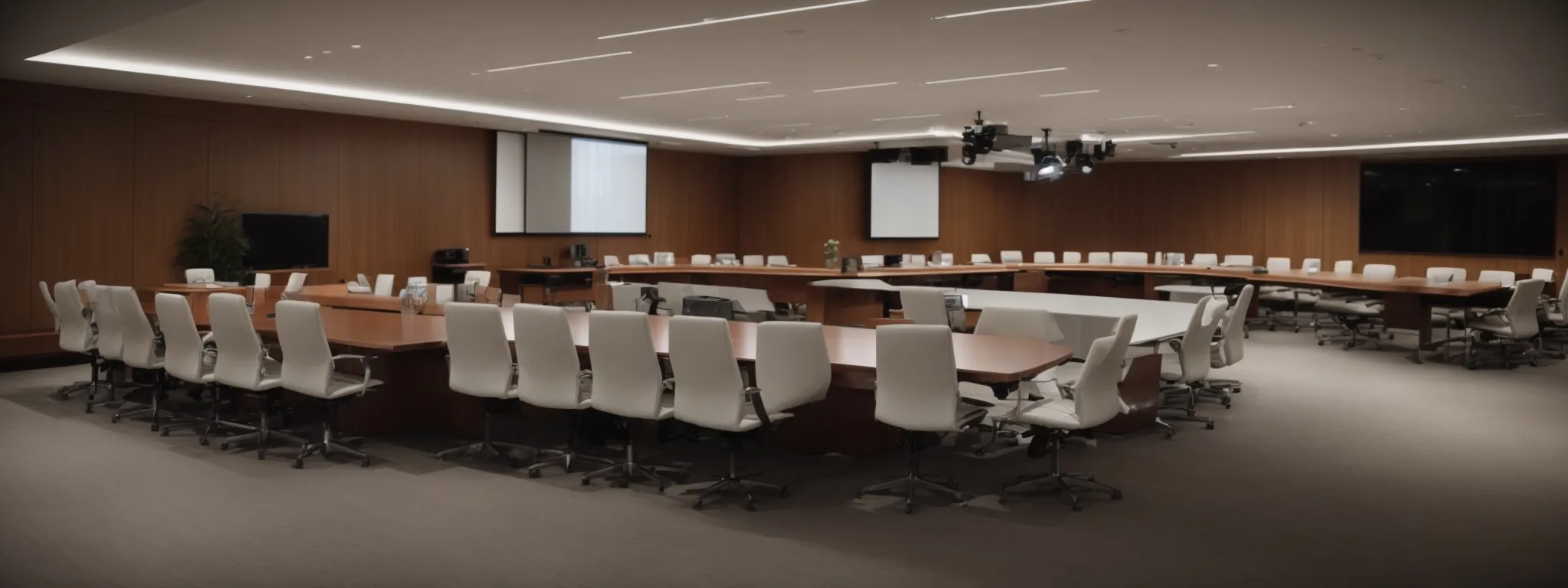Comprehensive Guide to ICSID Procedures and Rules: Article-by-Article Analysis
Navigating the intricacies of the International Centre for Settlement of Investment Disputes (ICSID) can be a daunting task for investors and legal practitioners alike.
Established under the aegis of the World Bank Group, ICSID plays a pivotal role in the arbitration of international investment disputes, providing a legal and institutional framework for arbitration, conciliation, and fact-finding.
Its procedures and rules, detailed in numerous articles, form the backbone of investment arbitration, impacting the resolution of disputes between foreign investors and states.
Understanding these procedures is crucial for anyone involved in or considering investment arbitration under ICSID.
In this article, we delve into an article-by-article analysis of ICSID’s procedures and rules, providing a clear and comprehensive guide to navigating this complex terrain.
Key Takeaways on ICSID Arbitration Procedures for Legal Professionals
- The International Centre for Settlement of Investment Disputes (ICSID) Provides a Structured Framework for Resolving International Investment Disputes Under the World Bank Group’s Auspices
- ICSID Arbitration Processes Emphasize Fairness, Efficiency, and Adherence to International Law, With Structured Timelines and Procedural Steps Ensuring Equitable Dispute Resolution
- The Establishment of the Arbitral Tribunal and the Meticulous Submission of Memorials and Evidence Are Essential Phases in the ICSID Arbitration Process, Promoting a Thorough and Balanced Examination of Cases
- Post-Arbitration Procedures Under ICSID, Including Annulment and Enforcement of Awards, Ensure the Integrity of the Arbitration Process and the Practical Realization of Arbitral Decisions Across Member States
- Articles 52 and 54 of the ICSID Convention Highlight the System’s Commitment to Procedural Fairness and the Global Enforceability of Arbitration Awards, Respectively, Reinforcing the Credibility of International Investment Dispute Resolution
Introduction to ICSID and Its Key Functions

Established under the auspices of the World Bank Group, the International Centre for Settlement of Investment Disputes (ICSID) serves as a pivotal institution in the realm of international arbitration, primarily tasked with handling investment disputes between countries and foreign investors.
This specialized role stems from its unique position enabled by the Convention on the Settlement of Investment Disputes Between States and Nationals of Other States, bringing a structured framework for resolving international investment disputes.
ICSID’s governance structure, composed of an Administrative Council chaired by the World Bank’s president and a Secretariat led by the Secretary-General, underscores its foundational role in promoting legal and procedural consistency in investment arbitration.
This introduction paves the way for a deeper dive into how ICSID not only facilitates arbitration and conciliation of investment disputes but also contributes significantly to the development and clarification of international investment law.
Understanding the Establishment of ICSID
The foundation of the International Centre for Settlement of Investment Disputes (ICSID) was built on a vision to offer a neutral platform dedicated exclusively to settling investment disputes. This initiative was a direct response to increasing concerns over the legal challenges and political risks that foreign investors faced abroad.
To actualize this vision, ICSID was formally established in 1966, following the ratification of the Convention on the Settlement of Investment Disputes Between States and Nationals of Other States. This significant move set the stage for a new era in international investment law, aiming to bridge the legal gap for foreign investors and host states alike:
| Year | Event |
|---|---|
| 1966 | Formal establishment of ICSID following ratification of the Convention |
| 1965 | The signing of the Convention on the Settlement of Investment Disputes |
The Role of ICSID in International Investment Disputes
The International Centre for Settlement of Investment Disputes (ICSID) plays a crucial part in moderating the delicate balance between foreign investors and host states, offering an established process for dispute resolution. It stands as the premier venue for international arbitration, where its tribunal adjudicates cases stemming from disagreements over investments, applying principles drawn from international law and bilateral investment treaties.
At the heart of ICSID’s role is its ability to bring consistency and predictability to the resolution of international investment disputes. Its procedures and rules, integrated with the principles of the World Bank and aligned with global legal standards, provide a transparent, fair framework for both parties involved: the foreign investor and the host state. This ensures that cases are resolved based on solid legal rationale, grounded in the extensive arsenal of agreements and treaties governing international investment:
| Function | Impact |
|---|---|
| Arbitration | Offers a neutral platform to adjudicate investment disputes |
| Conciliation | Facilitates amicable resolution before reaching the arbitration phase |
| Legal Framework Consistency | Ensures dispute resolution is conducted under internationally recognized laws |
Overview of ICSID’s Governance Structure
The governance structure of the International Centre for Settlement of Investment Disputes (ICSID) is pivotal in ensuring its effective operation within the international legal sphere. At its helm, the Administrative Council, chaired by the president of the World Bank, exercises overarching authority, setting the policy direction and supervising the institution’s administration and finances.
Supporting the Administrative Council, the Secretariat, led by the Secretary-General, manages the day-to-day operations of ICSID, including the administration of cases and the provision of support to the tribunals and conciliation commissions. This structure not only facilitates transparency and efficiency in the institution’s procedures but also upholds its status as a cornerstone of international arbitration and conciliation.
Initiation of the Arbitration

The initiation of arbitration under the International Centre for Settlement of Investment Disputes (ICSID) marks a critical juncture in the resolution of investment disputes, setting the procedural machinery into motion.
This phase is meticulously governed by Article 36 of the ICSID Convention, which outlines the necessary steps starting from the submission of the request for arbitration to the formal registration of the request by the Secretariat.
The procedures detailed in Article 36 ensure that the consenting parties’ intentions are clearly identified and acknowledged, laying the groundwork for a structured progression into the arbitration process.
These preliminary stages underscore the importance of mutual consent between the disputing parties and adherence to the specified registration protocols, serving as the foundational elements for the advancement of the arbitration proceedings.
Request for Arbitration under ICSID Article 36
Article 36 of the ICSID Convention delineates the procedural framework for instituting arbitration proceedings, marking a formal declaration of the dispute by the claimant against the respondent state or entity. It specifies the need for a written request, detailing the relevant facts of the dispute, the parties involved, and an assertion of consent by both parties to arbitrate under ICSID’s purview.
| Stage | Action |
|---|---|
| Initial Submission | Claimant submits a written request to ICSID detailing the dispute. |
| Verification | ICSID Secretariat reviews for compliance with Article 36 requirements. |
Upon receipt of the request for arbitration, the Secretariat undertakes a preliminary examination to ascertain its conformity with the standards set forth in Article 36: this includes an evaluation of the documentation’s completeness, the clarity in establishing jurisdiction, and the explicit consent by parties to resolve their dispute through ICSID arbitration. This critical juncture initiates the dispute resolution mechanism, propelling the arbitration process forward.
Registration of the Request Article 36(3) of the ICSID Convention
Under Article 36(3) of the ICSID Convention, the registration of a request for arbitration represents a critical step in the arbitration process. It signifies the Secretary-General’s formal acknowledgment of the request, confirming its consistency with the ICSID’s requirements and officially commencing the arbitration proceedings. This procedural milestone facilitates the shift from mere assertion of a dispute to its active resolution through the arbitration framework established by ICSID.
| Procedural Step | Description |
|---|---|
| Formal Acknowledgment | Secretary-General confirms the request’s compliance with ICSID standards. |
| Commencement of Proceedings | Official start of the arbitration process under the auspices of ICSID. |
The effect of this registration is twofold: it activates the institution’s administrative and procedural machinery, and it notifies both the claimant and the respondent of the case’s formal acceptance and entry into ICSID’s dispute resolution system. As a direct consequence, the parties are positioned to advance toward the constitution of the arbitral tribunal and the subsequent stages of the arbitration proceedings.
Procedures for Consent and Registration Explored in Article 36
Article 36 lays the foundation for a structured engagement process between disputing parties and the International Centre for Settlement of Investment Disputes by delineating the requisites for consent and registration. It emphasizes the necessity for explicit consent from both parties, a prerequisite ensuring that the dispute is within ICSID’s domain and that both the investor and the host state agree to arbitrate under its rules.
The registration process as articulated in Article 36 further guarantees the integrity and formal initiation of arbitral proceedings. This step validates the dispute’s eligibility under ICSID’s regulations, marking a critical transition from contention to a procedural pathway for resolution. The clarity and precision of this process uphold the Centre’s commitment to impartial and efficacious dispute adjudication.
Constitution of the Arbitral Tribunal

Transitioning into the next critical stage of the arbitration process under the International Centre for Settlement of Investment Disputes (ICSID) framework, the formation of the arbitral tribunal serves as a fundamental milestone.
According to ICSID rules, particularly Article 37, this step maps out the procedural and substantive guidelines for establishing the tribunal that will oversee the dispute resolution.
Aligned with the procedural timeline, ICSID Arbitration Rule 12 sets a specific timeframe of 90 days from the registration of the request for the constitution of the tribunal.
This period is crucial, marking a phase where the arbitral fabric of the case begins to take shape, thereby solidifying the path forward for a fair and equitable adjudication of the dispute at hand.
Formation of the Tribunal ICSID rules Article 37
Article 37 of the ICSID rules delineates the structured process for forming the arbitral tribunal, a cornerstone in the arbitral process. This step involves the appointment of arbitrators by both the disputing parties and, if necessary, by the Chairman of the Administrative Council, ensuring a balanced tribunal composition reflective of both parties’ preferences and the impartiality required for fair judgment.
| Step | Action | Responsible Party |
|---|---|---|
| 1 | Nomination of Arbitrators | Disputing Parties |
| 2 | Appointment by Chairman | If parties cannot agree or for presiding arbitrator |
This framework established under Article 37 fosters an environment where justice is not only seen to be done but is done, through the careful selection and consensus on the tribunal’s members. Subsequently, it propels the arbitration into a future where a well-constituted tribunal can judiciously assess the merits of the case, anchored by the credibility and expertise of its arbitrators.
Time Frame: ICSID Arbitration Rule 12 suggests a timeline of 90 days from the date of registration of the request
The stipulation under ICSID Arbitration Rule 12 introduces a concise timeline, prescribing 90 days from the request’s registration for the formation of the arbitral tribunal. This specific duration underscores the institution’s commitment to efficiency and timely dispute resolution, establishing a clear deadline for both parties to adhere to in preparing for arbitration proceedings.
This defined period not only streamlines the preparatory phase but also instills a sense of urgency in selecting arbitrators, ensuring that the process advances without unnecessary delays. By setting a structured timeframe, ICSID enhances the predictability of arbitration timelines, facilitating better planning and resource allocation for all involved stakeholders.
Preliminary Phase

The preliminary phase under the International Centre for Settlement of Investment Disputes (ICSID) procedures accentuates a crucial juncture where the respondent is afforded an opportunity to challenge the jurisdiction or competence of the tribunal.
As stipulated in Article 41 of the ICSID Convention, this objection must notably be raised within a window of 30 days following the tribunal’s constitution and prior to convening the initial session.
This phase is pivotal, as it allows for the resolution of disputes regarding the tribunal’s authority to hear the case, thereby streamlining the arbitration process by addressing jurisdictional challenges at an early stage.
Preliminary Objections: Per Article 41 of the ICSID Convention.
The early stages of an ICSID arbitration process present a critical opportunity for the respondent to contest the tribunal’s jurisdiction or its capacity to adjudicate the dispute, as ordained by Article 41 of the ICSID Convention. This procedural safeguard ensures that any questions regarding the tribunal’s authority are addressed promptly, safeguarding the efficiency of the arbitration proceedings:
- The respondent meticulously examines the case’s compatibility with ICSID’s jurisdictional scope.
- Upon identifying grounds for objection, the respondent articulates these concerns in a formal submission to the tribunal.
- This objection must be filed within a stringent timeframe of 30 days following the tribunal’s constitution, underscoring the importance of swift action to challenge jurisdiction or competence before substantial proceedings commence.
This mechanism for raising preliminary objections underscores the participatory balance within the ICSID framework, granting the respondent a procedural avenue to contest the tribunal’s jurisdiction or competence early in the arbitration process. Not only does this facilitate a more streamlined and focused arbitration, but it also reinforces the principles of fairness and equitable treatment that are central to the ICSID system.
First Session

Marking a pivotal moment in the arbitration process under the International Centre for Settlement of Investment Disputes (ICSID), the first session lays the groundwork for how the proceedings will unfold, directly impacting the efficiency and clarity of the entire arbitration.
Rule 13 of the ICSID Arbitration Rules explicitly codifies the procedural norms and expectations for this initial gathering, ensuring that all parties have a mutual understanding of the timeline, the pertinent rules governing the arbitration, and the roadmap for presenting evidence and arguments.
This inaugural meeting sets in motion the careful orchestration of procedural steps, embodying the principles of fairness and due diligence that underpin the arbitration’s integrity and legitimacy.
Conduct of the Proceedings: Rule 13 of the ICSID Arbitration Rules
The first session orchestrated under Rule 13 of the ICSID Arbitration Rules is instrumental in delineating the procedural roadmap for pending arbitration. It serves as a foundational platform where pivotal administrative and procedural determinants are set, including the linguistic preference for proceedings, potential consolidation of claims, and predetermination of the arbitral process’s timeline.
This inaugural meeting under Rule 13 dictates the procedural tempo and framework of the arbitration, meticulously ensuring that both the claimant and the respondent establish a mutually comprehensible strategy concerning evidence presentation, hearing schedules, and post-hearing submissions:
- Identification of procedural language(s) for efficient communication and submissions.
- Discussion and establishment of a comprehensive timeline for all arbitration stages.
- Agreement on the format and rules governing the submission of evidence.
Written Phase

The transition into the written phase under the International Centre for Settlement of Investment Disputes (ICSID) Arbitration Rules marks a significant progression in the arbitration process.
This stage is meticulously governed by Articles 31 to 34, which set forth the procedures for the submission of memorials by the disputing parties.
Within this framework, the arbitral tribunal plays a crucial role in establishing clear deadlines for these submissions, often allocating a span of three to six months for each party to prepare and deliver their initial submission.
This period is essential for both sides to articulate their arguments, compile requisite evidence, and formally outline their respective cases, thereby laying a robust foundation for the arbitration proceedings ahead.
Submission of Memorials: Articles 31 to 34 of the ICSID Arbitration Rules
The submission of memorials, as delineated in Articles 31 to 34 of the ICSID Arbitration Rules, represents a critical juncture where the disputing parties formally present their claims and defenses. This written documentation encompasses a detailed exposition of the factual and legal grounds upon which each party rests its case, serving as the bedrock upon which the arbitral tribunal will assess and render a decision.
Integral to the arbitration process’s integrity, these articles ensure that both the claimant and the respondent have equitable opportunities to articulate their positions comprehensively. By stipulating clear guidelines for the preparation and submission of memorials, ICSID underscores its commitment to a balanced and thoroughly considered approach to investment dispute resolution.
Time Frames: The tribunal will set deadlines for these submissions, typically allowing three to six months for each party’s initial submission.
In the structured environment of ICSID arbitration, setting precise time frames for submissions is a meticulous process that reflects the tribunal’s commitment to fairness and procedural efficiency. The tribunal’s determination of deadlines, generally spanning between three to six months, ensures that both parties have sufficient time to prepare their case, while maintaining momentum towards a resolution.
Following the establishment of deadlines, the arbitral process moves forward with a clear schedule, as outlined below:
| Submission | Deadline from Registration |
|---|---|
| Claimant’s Memorial | 3 to 6 months |
| Respondent’s Counter-Memorial | 3 to 6 months following Claimant’s submission |
This approach balances the need for thoroughness with the demand for an expeditious resolution, ensuring both parties can articulate their positions fully within a framework that is equitable and just.
Hearing

Following the meticulous exchange of written submissions, the arbitration process under the International Centre for Settlement of Investment Disputes (ICSID) advances to the oral proceedings, as delineated by Articles 35 to 37 of the ICSID Arbitration Rules.
This stage, commonly extending beyond a year from the initiation of arbitration, serves as a critical platform for both parties to verbally present their cases, challenge evidences, and articulate arguments before the arbitral tribunal.
The transition to hearing underscores the shift from paper-based arguments to dynamic, interactive legal discourse, allowing the tribunal to assess the credibility of witnesses, clarify complex legal and factual issues, and further explore the nuances of the dispute at hand.
Oral Proceedings per Article 35 to 37 of the ICSID Arbitration Rules
The articles from 35 to 37 within the ICSID Arbitration Rules delineate a structured approach to oral proceedings, setting the stage for an integral component of the arbitration process. These provisions detail the manner in which the disputing parties present their case in person before the arbitral tribunal, enabling a live exchange that is critical for the nuanced understanding of complex disputes.
Importantly, this stage allows for the interrogation of witnesses and the clarification of legal positions in real time, contributing significantly to the tribunal’s ability to make informed, fair decisions. The transition from written submissions to oral advocacy underscores the dynamic nature of arbitration under ICSID, reflecting its adaptability to the multifaceted aspects of international investment disputes.
Time Frame: usually more than a year
The duration until the hearing stage in the International Centre for Settlement of Investment Disputes (ICSID) arbitration process typically extends beyond a year from the point of initiation. This elongated time frame accommodates the intricate procedures inherent in international arbitration, including the preparation of detailed written submissions and the thorough review by the tribunal.
This expansive period before reaching the oral proceedings reflects the depth and complexity of cases under ICSID’s purview. It implicitly allows the disputing parties ample time to comprehensively prepare their respective cases, ensuring that when the hearing commences, all relevant facts and arguments can be effectively presented and deliberated upon.
Post-Hearing Procedures and Deliberations

Following the dynamic exchanges of the hearing phases, the International Centre for Settlement of Investment Disputes (ICSID) arbitration process transitions into post-hearing procedures and deliberations.
These crucial steps, governed by rules 38 and 39 of the ICSID Arbitration Rules, enable the parties to refine their positions through post-hearing briefs and correct any factual or clerical errors.
This phase not only promotes the accuracy and comprehensiveness of the tribunal’s review but also sets the stage for in-depth tribunal deliberations.
Such deliberations are instrumental in reaching a fair and informed decision, reflecting the collective judgment of the tribunal’s members after extensive consideration of all presentations and evidence submitted during the arbitration proceedings.
Post-Hearing Briefs and Corrections per rules 38 and 39 of the ICSID Arbitrational Rules
Following the culmination of oral hearings, the ICSID arbitration process advances to a phase that involves further refinement of arguments through the submission of post-hearing briefs, prescribed by Rule 38. This stage allows the disputants a final opportunity to synthesize their cases, elaborating on pivotal issues and presenting additional insights that emerged during the hearing. The goal is to succinctly encapsulate the essence of their argumentation, providing the tribunal with a comprehensive basis for evaluation:
| Rule | Description | Purpose |
|---|---|---|
| 38 | Post-Hearing Briefs | Offers disputants a chance to consolidate their arguments post-hearing, ensuring no vital point is overlooked. |
| 39 | Corrections | Permits parties to request correction of clerical, computational, or typographical errors to maintain the integrity of the arbitration process. |
In parallel, Rule 39 addresses the procedural mechanism for rectifying any clerical or typographical errors that may have been inadvertently included in the exchange of documentation or during the hearings. This corrective step underscores the commitment of the ICSID structure to accuracy and fairness, ensuring that decisions are reached based on precise information and that the parties’ submissions are represented without error:
Tribunal Deliberations
Following the conclusion of post-hearing procedures, the tribunal involved in an ICSID arbitration embarks on the critical phase of deliberations. This stage is dedicated to an in-depth discussion and analysis of all evidence and arguments presented throughout the arbitration process, facilitating a collective effort toward reaching a well-reasoned final award.
| Deliberation Step | Description |
|---|---|
| Review of Submissions | Examination of all written and oral submissions, evidence, and legal arguments. |
| Decision Making | Joint formulation of the final award based on a thorough analysis and consensus among tribunal members. |
The deliberation process underscores the tribunal’s commitment to ensuring that all aspects of the dispute are fairly and meticulously considered. It concludes with the drafting of the final award, embodying the tribunal’s collective judgment and resolving the dispute in accordance with the applicable legal standards and principles.
Award

The culmination of the International Centre for Settlement of Investment Disputes (ICSID) arbitration process is the issuance of the award, governed by Article 48 of the ICSID Convention and Rule 47 of the ICSID Arbitration Rules.
This final phase marks the arbitrators’ determination and the resolution of the dispute at hand.
Despite the absence of a strict timeline for delivering the award, Rule 46 encourages the tribunal to work expeditiously, drafting the award promptly after considering the last submission made by the parties.
This commitment to timeliness ensures a resolution that is not only fair but also delivered in a manner that respects the parties’ right to a conclusion without undue delay.
Issuance of the Award per Article 48 of the ICSID Convention and Rule 47 of the ICSID Arbitration Rules
The final stage in the ICSID arbitration process, as outlined in Article 48 of the ICSID Convention and Rule 47 of the ICSID Arbitration Rules, focuses on the issuance of the award. This phase represents the arbitral tribunal’s definitive resolution of the dispute, encapsulating their findings, decisions, and the grounds upon which these are based.
Following the extensive deliberations and consideration of all submissions by the parties, the tribunal meticulously drafts the award. This document formalizes the outcome of the arbitration and is binding on all parties involved:
- The tribunal analyzes and integrates the evidence and arguments presented throughout the arbitration.
- A comprehensive decision is formulated, clearly outlining the resolution.
- The award is subsequently issued to the parties, marking the arbitration’s conclusion.
Time Frame for the Award: There’s no specific timeline for issuing the award, but Rule 46 of the ICSID Arbitration Rules suggests that the tribunal should aim to draft the award as soon as possible after the last submission
The timeline for the delivery of the award in ICSID arbitration represents a balance between thoroughness and efficiency. While Rule 46 of the ICSID Arbitration Rules does not set a fixed schedule, it underscores the importance of the tribunal’s prompt action once it has received the last of the parties’ submissions.
| Rule Number | Rule Requirement | Intended Outcome |
|---|---|---|
| 46 | Draft the award as soon as possible after the last submission | Ensures a timely resolution to the dispute without sacrificing the depth of consideration |
By encouraging a swift draft of the award following the final submission, ICSID aims to keep the lengthy arbitration process from becoming protracted. This approach respects the parties’ need for resolution while maintaining the integrity of the tribunal’s deliberative process.
Post-Award Procedures

The completion of arbitration proceedings under the International Centre for Settlement of Investment Disputes (ICSID) marks a crucial transition into the post-award phase, highlighted by two fundamental processes: annulment and enforcement of awards.
Navigating through Article 52, parties are introduced to the specific conditions and procedural path for seeking the annulment of an arbitration award, a recourse aimed at ensuring the integrity and fairness of the arbitration process.
Conversely, Article 54 delineates the framework for the enforcement of ICSID awards, empowering prevailing parties to convert arbitral decisions into tangible outcomes within the jurisdictions of signatory states.
This shift from arbitration to post-award procedures underscores the comprehensive nature of the ICSID system, encompassing not only dispute resolution but also the finality and realization of arbitral awards.
Annulment and Enforcement
The annulment process under ICSID provides a structured method for parties to challenge an arbitration award on specific grounds, such as procedural breaches or excesses of power by the tribunal, thereby safeguarding the fairness and integrity of the arbitration system. This critical review mechanism underscores the balance between finality and justice in ICSID’s arbitration framework.
Enforcement of ICSID awards facilitates the real-world application of tribunals’ decisions, ensuring that successful parties can seek recognition and enforcement in any of the member states, as obligated under the ICSID Convention. This provision strengthens the binding nature of awards and promotes a sense of reliability and enforceability in international investment dispute resolution.
Annulment under Article 52 of the ICSID Convention
Article 52 of the ICSID Convention introduces a nuanced avenue for the annulment of arbitral awards, distinct from an appeal on the merits of the case. It delineates specific grounds upon which a party may seek annulment, including the tribunal’s improper constitution, evident corruption, and significant procedural violations. This provision embodies a critical balance, aiming to fortify the credibility and fairness of the arbitration process without undermining the finality of awards:
| Grounds for Annulment | Description |
|---|---|
| Improper Constitution of the Tribunal | Challenges related to the composition or appointment of tribunal members. |
| Corruption | Instances of corruption affecting the tribunal’s decision. |
| Significant Procedural Violations | Violations that have materially impacted the award’s outcome. |
The mechanism set forth in Article 52 serves as a safeguard, ensuring that parties have recourse in the face of procedural irregularities or abuses of power that might taint the arbitral process. This framework reinforces the integrity of the ICSID system, providing a structured path for addressing grievances while upholding the trust in international arbitration as a means of dispute resolution.
The enforcement of awards is governed by Article 54
Article 54 of the ICSID Convention plays a critical role in the practical realization of arbitral awards, mandating signatory states to recognize and enforce ICSID awards as if they were final judgments of their own courts. This unique attribute underscores the Convention’s robust framework, designed to facilitate the enforcement of arbitration outcomes effectively across borders.
The enforcement mechanism established by Article 54 is instrumental in ensuring that winning parties can actualize the benefits of their arbitral awards without facing unnecessary legal hurdles. Enforcing awards through the local courts of member states solidifies the binding nature of ICSID’s arbitration process, thus reinforcing the reliability and effectiveness of international investment dispute resolution:
| Article | Function | Impact |
|---|---|---|
| 54 | Enforcement of Awards | Facilitates the real-world application of arbitral decisions, enhancing the credibility and enforceability of ICSID arbitration globally. |
Frequently Asked Questions
What are the key functions of the International Centre for Settlement of Investment Disputes (ICSID)?
The International Centre for Settlement of Investment Disputes (ICSID) serves as a principal institution dedicated to providing facilities for conciliation and arbitration of international investment disputes. Its primary roles encompass facilitating the resolution of disputes between international investors and states, fostering greater cooperation and understanding in international investment, and ensuring legal stability within the framework of international finance and trade.
At its core, ICSID operates under the auspices of the World Bank Group, establishing a connection between the realms of international investment and global economic development. This unique position allows it to harmonize the objectives of investment promotion and protection with the broader goals of international economic advancement.
One of the standout features of ICSID is its capability to administer cases under its own rules and under the United Nations Commission on International Trade Law (UNCITRAL) Arbitration Rules, among others. This flexibility makes it a versatile hub for dispute resolution in the international arena. Additionally, it offers mediation and fact-finding services, expanding the spectrum of dispute resolution mechanisms available to parties.
ICSID’s significance is further amplified by its role in enforcing legal agreements between investors and host states, often codified in treaties like the Energy Charter Treaty or various bilateral investment treaties. These agreements typically include provisions that mandate arbitration in case of a dispute, underscoring ICSID’s vital role in international law and arbitration.
Moreover, the center’s arbitration process is distinguished by its meticulous attention to aspects like jurisdiction, tribunal constitution, evidence evaluation, and the enforcement of arbitral awards. The framework aims to ensure fairness, transparency, and efficiency, thus building confidence among investors and states alike.
In the process of resolving disputes, ICSID acts not just as an arbitrator but also as an institution that encourages peaceful, diplomatic settlement of investment conflicts. Its conciliation process, designed to provide an amicable resolution, embodies this approach, emphasizing negotiation and mutual agreement.
In conclusion, the International Centre for Settlement of Investment Disputes plays a multifaceted role in the global investment landscape. By combining dispute resolution with efforts to improve international investment relations, ICSID contributes significantly to the legal and procedural underpinnings of international finance and economic development.
How is the arbitration process initiated within the ICSID framework?
The arbitration process within the International Centre for Settlement of Investment Disputes (ICSID) framework begins when a party submits a request for arbitration, which is akin to opening the door to a structured legal forum designed for the resolution of investment disputes. This submission sets in motion a procedural mechanism aimed at constituting an arbitral tribunal capable of rendering a binding decision under the auspices of the ICSID, as outlined in the convention establishing this institution, which is part of the World Bank Group.
What are the procedures involved in constituting the arbitral tribunal under ICSID rules?
Constituting the arbitral tribunal under the International Centre for Settlement of Investment Disputes (ICSID) rules involves a structured procedure wherein both disputing parties, typically a private investor and a State, have the opportunity to select arbitrators to ensure a balanced and impartial panel. This process begins with the nomination of arbitrators, adhering to the requirements established by ICSID, which aims to create a tribunal that is competent and free from any bias or conflict of interest.
Following the initial appointment stage, the next steps revolve around the confirmation of the arbitrators’ nominations. The ICSID Secretary-General plays a pivotal role here, verifying each nominee’s eligibility and willingness to serve, thereby ensuring they meet the center’s stringent standards for impartiality and expertise. This mechanism is designed to foster trust among the parties involved, providing assurance that the tribunal will handle their dispute with fairness and professionalism.
In cases where parties face challenges in agreeing on the nominations, the ICSID rules offer mechanisms to resolve such impasses. These include appointing authorities and detailed stipulations for appointment defaults, all aimed at preventing deadlocks that could delay the arbitration process. The establishment of the tribunal culminates with the constitution of its members, signifying the commencement of proceedings. This critical phase underscores the intricate balance between party autonomy in selecting arbitrators and the procedural safeguards embedded in the ICSID framework to uphold the integrity of the arbitration process.
Through this meticulously outlined procedure, the ICSID ensures that the constituted arbitral tribunal is fully equipped to address the complexities of international investment disputes. It stands as a testament to the robustness of the dispute resolution infrastructure underpinning international arbitration, embodying principles of equity, transparency, and judicial efficiency crucial for fostering global economic development and investor confidence.
Can you explain the different phases involved in an ICSID arbitration, including the preliminary phase and the written phase?
Certainly, an ICSID arbitration, managed by the International Centre for Settlement of Investment Disputes, involves several distinct phases, moving from preliminary evaluations to comprehensive written submissions. Initially, the preliminary phase encompasses the registration of the request for arbitration, after which the tribunal assesses jurisdiction and admissibility issues. This is succeeded by the written phase, where parties exchange detailed statements, counterclaims, and rebuttals, laying down the evidence and legal arguments underpinning their respective positions.
What Are the Post-Hearing Procedures and Deliberations That Take Place After the Hearing in an ICSID Arbitration?
After the hearing concludes in an ICSID (International Centre for Settlement of Investment Disputes) arbitration, the tribunal deliberates on the evidence presented and commences the drafting of the award. This process involves a thorough examination of the claims, defenses, and applicable legal principles to reach a final decision.
The post-hearing procedures in ICSID arbitration, a key mechanism under the World Bank Group for resolving international investment disputes, are vital for ensuring that the arbitration’s outcome is just and equitable. These procedures begin immediately after the closure of the hearing, where both parties have presented their cases, evidence, and arguments.
The tribunal, constituted under the auspices of the ICSID, first engages in a process of deliberation. This involves reviewing all the documentation, including legal briefs, testimonies, and exhibits submitted during the hearing. The tribunal members discuss the various aspects of the case, drawing on their expertise in international law, investment treaties, and financial regulations.
One crucial step is the consideration of jurisdictional issues, ensuring that the tribunal has the authority to hear the case based on factors such as the nationality of the parties and the existence of consent to arbitration under the relevant treaty or contract. Another significant area the tribunal examines is the application of the law to the facts of the case. This review includes interpreting the relevant treaty provisions, contracts, and principles of international law that govern the dispute.
During their deliberations, the arbitrators aim to reach a consensus. However, if a unanimous decision is not feasible, a majority decision will suffice as long as there is a quorum. Once the tribunal reaches a decision on the merits of the case, it moves to the award drafting phase. This task involves creating a detailed document that outlines the tribunal’s findings on jurisdiction, liability, and, if applicable, the calculation of any compensation or relief awarded.
The award must be meticulously prepared, providing clear reasoning for the tribunal’s decisions on every contested issue. This clarity helps ensure that the award is robust and capable of withstanding scrutiny, especially in the event of an application for annulment or enforcement proceedings in national courts.
Finally, before the award is issued, the ICSID Secretariat reviews it for consistency with the Centre’s procedural rules, without interfering with the tribunal’s substantive findings. Upon completion of this review, the tribunal finalizes the award and dispatches it to the parties, marking the culmination of the arbitration process.
The post-hearing phase of an ICSID arbitration, thus, is a critical period that emphasizes the importance of careful deliberation, rigorous application of law, and meticulous drafting to achieve a fair and legally sound resolution of international investment disputes.
Conclusion
The “Comprehensive Guide to ICSID Procedures and Rules: Article by Article Analysis” plays a crucial role in elucidating the complexities of the International Centre for Settlement of Investment Disputes (ICSID) arbitration process.
By breaking down the procedural framework and rules into an accessible, article-by-article format, the guide demystifies the arbitration journey, from initiation and arbitration to post-award procedures, ensuring clarity and transparency in international investment dispute resolution.
It highlights ICSID’s structured approach to arbitration, showcasing the institution’s commitment to fairness, efficiency, and legal integrity.
Through detailed analysis, the guide reinforces the importance of mutual consent, procedural timelines, and the arbitrators’ critical roles in achieving a balanced, equitable resolution of disputes.
Underlining the strategic significance of each procedural phase and the enforceability of awards underscores ICSID’s pivotal role in fostering trust and reliability in international arbitration.
This guide ultimately serves as an invaluable resource for stakeholders navigating the intricacies of resolving investment disputes under ICSID’s auspices, reinforcing the system’s credibility and effectiveness in the global legal landscape.
Our law firm is well-versed in ICSID procedures. To learn more about our practice, contact us today !


